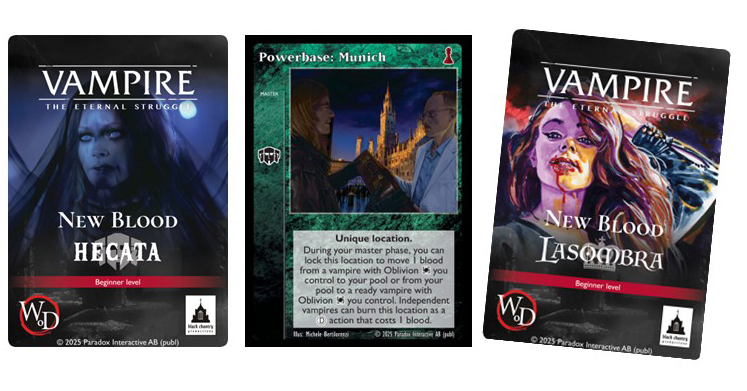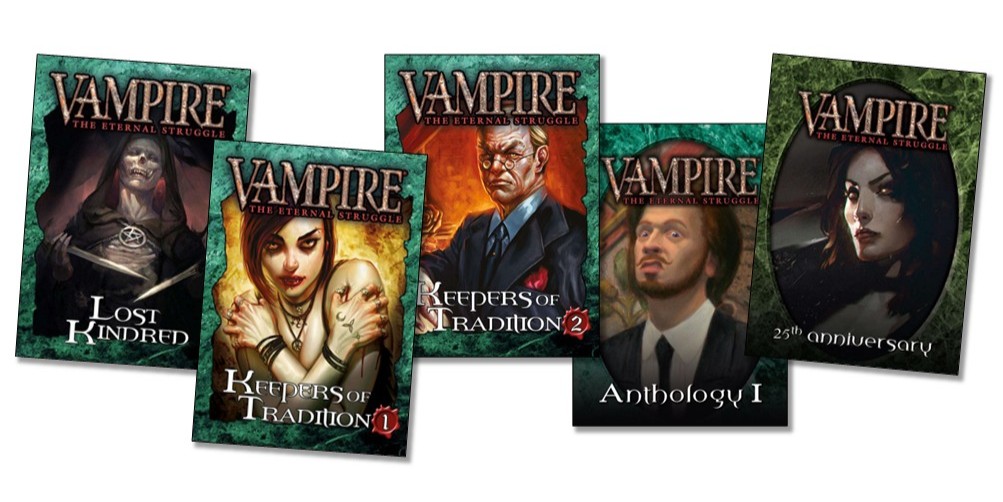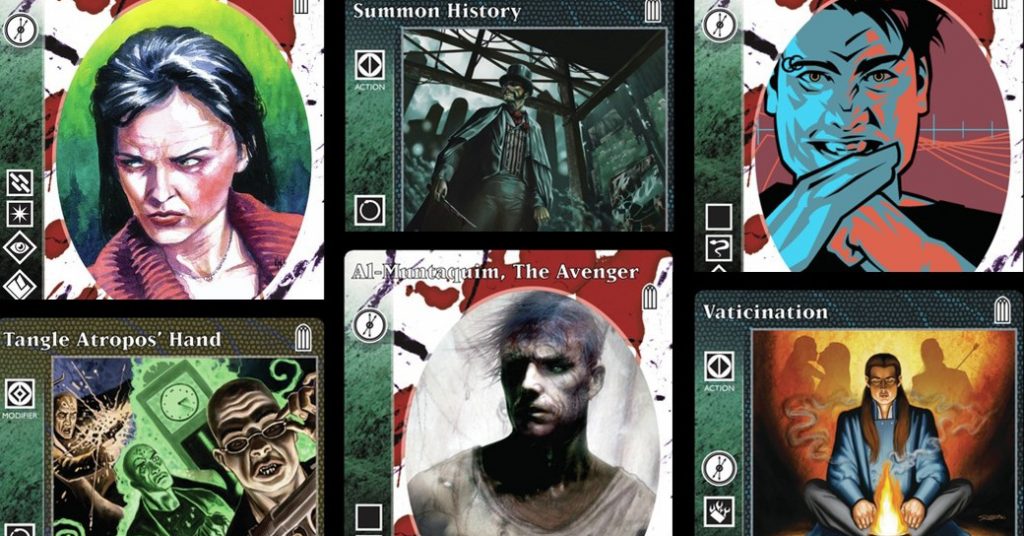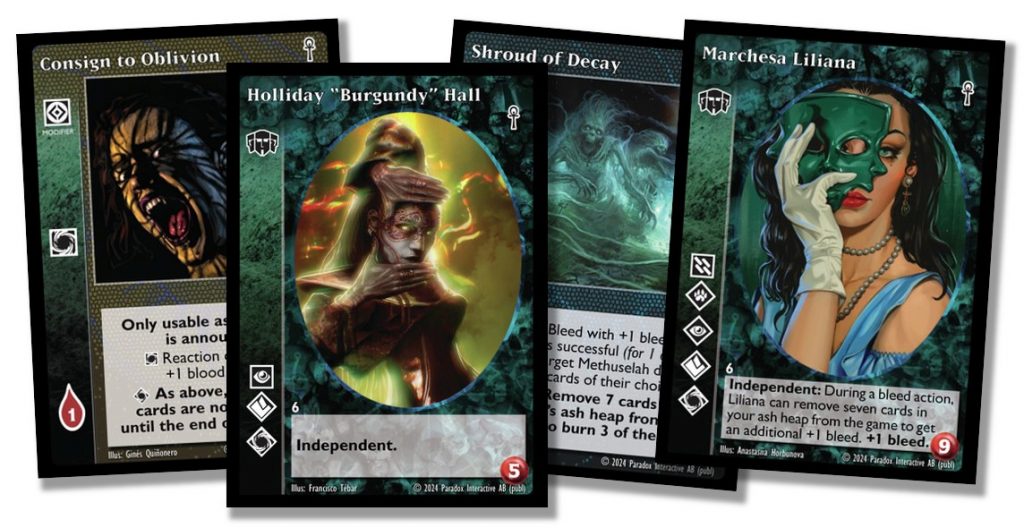
Hi! As a dedicated fan of Vampire: The Eternal Struggle you might have seen in the latest VEKN newsletter, printing has been booked for the two upcoming Hecata and Lasombra New Blood packs. These will be 56 cards each, with no less than 15 brand new cards. The official release day is May 31 2025, and that is also the tournament legality date for the new cards.
One of the new cards in the Hecata New Blood pack is Powerbase: Munich, with art by Michele Bertilorenzi. It allows you to get back some invested blood into your pool, but also to move around blood between your vampires, very handy.
Product pages for these packs with full content list will soon be up on our site – keep watch for that, and more previews in various channels!
Copyright © 2025 Paradox Interactive AB. www.paradoxinteractive.com. All rights reserved. Vampire: The Eternal Struggle and Vampire: The Masquerade® are trademarks and/or registered trademarks of Paradox Interactive AB. All rights reserved.





